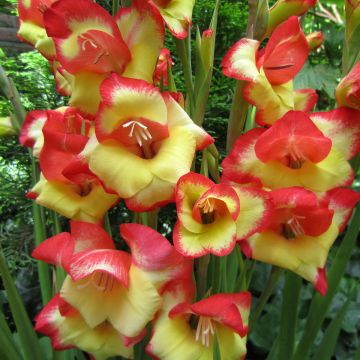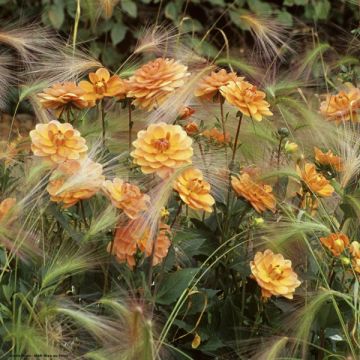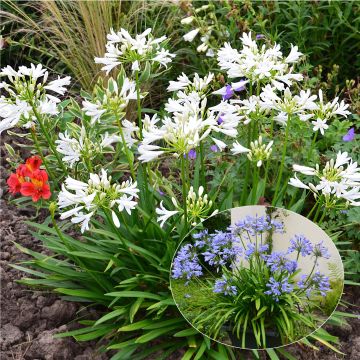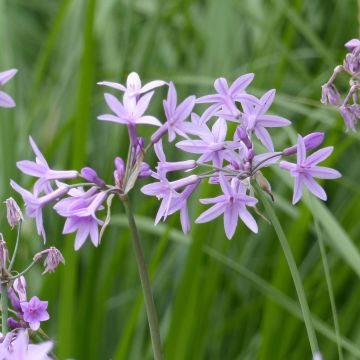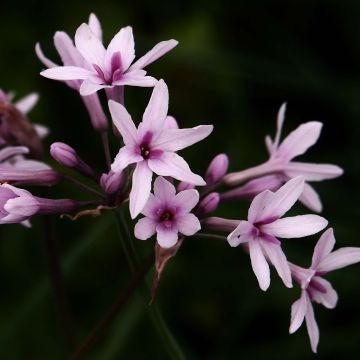Shipping country and language
Your country of residence may be:
Your country of residence is:
For a better user experience on our website, you can select:
Your shipping country:
-
Andorra
-
Austria
-
Belgium
-
Bulgaria
-
Canada
-
Chile
-
Croatia
-
Cyprus
-
Czechia
-
Denmark
-
Estonia
-
Finland
-
France
-
Germany
-
Greece
-
Hungary
-
Iceland
-
Ireland
-
Italy
-
Latvia
-
Lithuania
-
Luxembourg
-
Malta
-
Monaco
-
Netherlands
-
Poland
-
Portugal
-
Romania
-
Slovakia
-
Slovenia
-
Spain
-
Sweden
-
Switzerland
-
United Kingdom
We only deliver seed and bulb products to your country. If you add other products to your basket, they cannot be shipped.
Language:
-
French
-
German
-
Spanish
-
English
-
Italian
My Account
Hello
My wish lists
Log in / Register
Existing customer?
New customer?
Create an account to track your orders, access our customer service and, if you wish, make the most of our upcoming offers.


Sauromatum giganteum
Sauromatum giganteum
Sauromatum giganteum
Order in the next for dispatch today!
Dispatch by letter from €3.90.
Delivery charge from €5.90 Oversize package delivery charge from €6.90.
More information
This item is not available in your country.
Schedule delivery date,
and select date in basket
This plant carries a 6 months recovery warranty
More information
We guarantee the quality of our plants for a full growing cycle, and will replace at our expense any plant that fails to recover under normal climatic and planting conditions.
From €5.90 for pickup delivery and €6.90 for home delivery
Express home delivery from €8.90.
Does this plant fit my garden?
Set up your Plantfit profile →
Description
Sauromatum or Thyphonium giganteum, sometimes called Arum cornutum, is a curious bulbous plant related to arums that simultaneously develops, in summer, large lush leaves and a rather astonishing inflorescence, in the form of an upright cone called spathe, of a very dark reddish-brown colour. This Himalayan botanical species is one of the easiest to cultivate, as it tolerates cold weather quite well as long as the soil is not waterlogged in winter. You can plant it in shade or partial shade, under trees or along a shaded path where it will surely attract the attention of your visitors.
Sauromatum giganteum belongs to the Araceae family. It is a perennial herbaceous plant with a large rounded and flattened tuber. The vegetation emerges from the ground late, in July, at the same time as flowering, and disappears in autumn. The inflorescence appears at ground level, carried by a short stem. It consists of an elongated cup-shaped colored bract, with undulating edges, about 20cm (8in) long, which opens around a long and slender dark-coloured column called spadix. This spadix bears the true flowers, which are tiny. Although very aesthetic, these flowers emit an unpleasant but short-lived odour, thus attracting a large number of pollinating insects. The flowering is accompanied by very large bright green, veined leaves, resembling those of Colocasia. The leaves are borne by sturdy cylindrical stems, apple green with a purple base, 60-80cm (24-32in) tall.
Plant Sauromatum giganteum in partial shade alongside non-invasive bamboo (Fargesia), hostas, and ferns, at the base of deciduous trees, prominently displayed. You can also plant it against a north or east-facing wall. This unique plant can also be cultivated in a large pot, which allows it to be protected from excessive humidity in winter.
Report an error about the product description
Sauromatum giganteum in pictures


Plant habit
Flowering
Foliage
Botanical data
Sauromatum
giganteum
Araceae
Himalayas
Other Summer bulbs A to Z
Planting and care
Sauromatum giganteum enjoys soils rich in humus, light and fresh but very well-drained. The soil should never dry out in summer, but on the contrary, should never be waterlogged in winter. In case of high winter humidity, the bulb will rot. Expose them to partial shade, at the edge of large trees, with west being the best exposure. In heavy soil, add 1/3 leaf compost and 1/3 non-calcareous sand, which you will mix with your topsoil to a depth and width of 20-25cm (8-10in). Plant the bulb on a small bed of perlite, at a depth of 6-8cm (2-3in) (this will prevent rotting in winter), with the bud facing upwards, and cover it with your substrate.
In a pot, use a wider than tall terracotta pot filled with a substrate composed of half perlite or vermiculite and leaf compost preferably. Bury the bulbs 6-8cm (2-3in) underground and keep the soil moist but not waterlogged. In winter, store your pot frost-free and maintain a slight coolness, a few drops of water every 15 days will suffice. Resume watering in early spring, around April, as soon as the bulbs start to emerge.
Planting period
Intended location
Care
This item has not been reviewed yet - be the first to leave a review about it.
Hardy summer bulbs
Haven't found what you were looking for?
Hardiness is the lowest winter temperature a plant can endure without suffering serious damage or even dying. However, hardiness is affected by location (a sheltered area, such as a patio), protection (winter cover) and soil type (hardiness is improved by well-drained soil).

Photo Sharing Terms & Conditions
In order to encourage gardeners to interact and share their experiences, Promesse de fleurs offers various media enabling content to be uploaded onto its Site - in particular via the ‘Photo sharing’ module.
The User agrees to refrain from:
- Posting any content that is illegal, prejudicial, insulting, racist, inciteful to hatred, revisionist, contrary to public decency, that infringes on privacy or on the privacy rights of third parties, in particular the publicity rights of persons and goods, intellectual property rights, or the right to privacy.
- Submitting content on behalf of a third party;
- Impersonate the identity of a third party and/or publish any personal information about a third party;
In general, the User undertakes to refrain from any unethical behaviour.
All Content (in particular text, comments, files, images, photos, videos, creative works, etc.), which may be subject to property or intellectual property rights, image or other private rights, shall remain the property of the User, subject to the limited rights granted by the terms of the licence granted by Promesse de fleurs as stated below. Users are at liberty to publish or not to publish such Content on the Site, notably via the ‘Photo Sharing’ facility, and accept that this Content shall be made public and freely accessible, notably on the Internet.
Users further acknowledge, undertake to have ,and guarantee that they hold all necessary rights and permissions to publish such material on the Site, in particular with regard to the legislation in force pertaining to any privacy, property, intellectual property, image, or contractual rights, or rights of any other nature. By publishing such Content on the Site, Users acknowledge accepting full liability as publishers of the Content within the meaning of the law, and grant Promesse de fleurs, free of charge, an inclusive, worldwide licence for the said Content for the entire duration of its publication, including all reproduction, representation, up/downloading, displaying, performing, transmission, and storage rights.
Users also grant permission for their name to be linked to the Content and accept that this link may not always be made available.
By engaging in posting material, Users consent to their Content becoming automatically accessible on the Internet, in particular on other sites and/or blogs and/or web pages of the Promesse de fleurs site, including in particular social pages and the Promesse de fleurs catalogue.
Users may secure the removal of entrusted content free of charge by issuing a simple request via our contact form.
The flowering period indicated on our website applies to countries and regions located in USDA zone 8 (France, the United Kingdom, Ireland, the Netherlands, etc.)
It will vary according to where you live:
- In zones 9 to 10 (Italy, Spain, Greece, etc.), flowering will occur about 2 to 4 weeks earlier.
- In zones 6 to 7 (Germany, Poland, Slovenia, and lower mountainous regions), flowering will be delayed by 2 to 3 weeks.
- In zone 5 (Central Europe, Scandinavia), blooming will be delayed by 3 to 5 weeks.
In temperate climates, pruning of spring-flowering shrubs (forsythia, spireas, etc.) should be done just after flowering.
Pruning of summer-flowering shrubs (Indian Lilac, Perovskia, etc.) can be done in winter or spring.
In cold regions as well as with frost-sensitive plants, avoid pruning too early when severe frosts may still occur.
The planting period indicated on our website applies to countries and regions located in USDA zone 8 (France, United Kingdom, Ireland, Netherlands).
It will vary according to where you live:
- In Mediterranean zones (Marseille, Madrid, Milan, etc.), autumn and winter are the best planting periods.
- In continental zones (Strasbourg, Munich, Vienna, etc.), delay planting by 2 to 3 weeks in spring and bring it forward by 2 to 4 weeks in autumn.
- In mountainous regions (the Alps, Pyrenees, Carpathians, etc.), it is best to plant in late spring (May-June) or late summer (August-September).
The harvesting period indicated on our website applies to countries and regions in USDA zone 8 (France, England, Ireland, the Netherlands).
In colder areas (Scandinavia, Poland, Austria...) fruit and vegetable harvests are likely to be delayed by 3-4 weeks.
In warmer areas (Italy, Spain, Greece, etc.), harvesting will probably take place earlier, depending on weather conditions.
The sowing periods indicated on our website apply to countries and regions within USDA Zone 8 (France, UK, Ireland, Netherlands).
In colder areas (Scandinavia, Poland, Austria...), delay any outdoor sowing by 3-4 weeks, or sow under glass.
In warmer climes (Italy, Spain, Greece, etc.), bring outdoor sowing forward by a few weeks.



